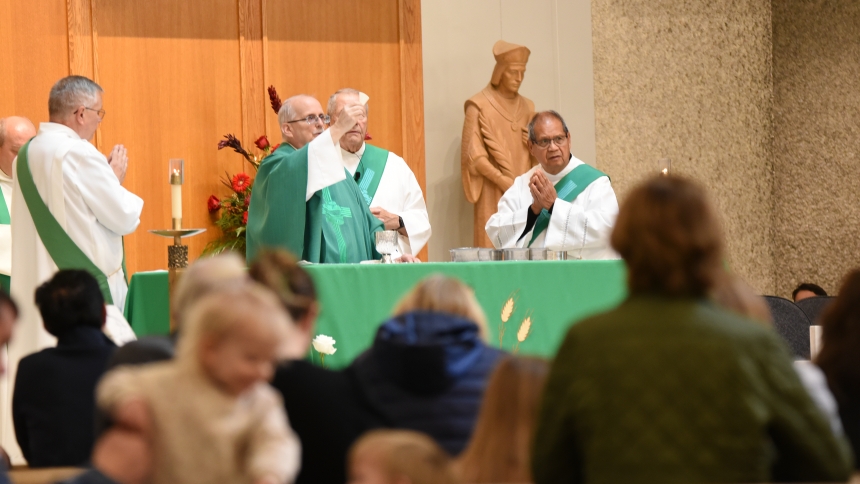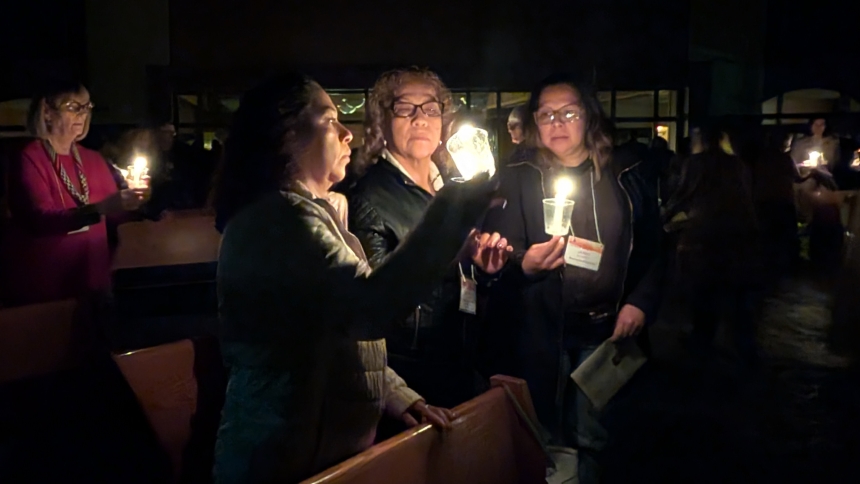
As published in the Northwest Indiana Catholic on September 4, 2016
This Sunday, September 4, Pope Francis will canonize Mother Teresa of Kolkata in the presence of hundreds of thousands of the faithful in St. Peter’s Square. We congratulate the Missionaries of Charity who live and serve in our diocese, as we are always grateful to them for their heroic lives of service to the poor in our midst, in imitation of their holy foundress.
How appropriate that Mother Teresa would be declared a saint in this Year of Mercy. This short dynamic nun, who taught in an upper class high school in India for many years before hearing the call to go live in the slums and serve the poorest of the poor, was a radiant icon of the mercy and love of Jesus Christ for the entire world. Her decision to leave her religious order and venture forth was met with many obstacles, doubts and opposition, which required years of patience and prayer to overcome. Her fellow sisters thought she was too delicate for such a mission and would be back in a week. Mother Teresa was many things, but delicate and fearful she was not.
One of her first encounters was with a dying man, filthy and oozing with open sores, who had been abandoned in a gutter. Mother tenderly picked him up, lovingly carried him to a local hospital for assistance and patiently held him in her arms in the waiting room when the medical staff refused to help an “untouchable.”
At one point before he died, the man looked at Mother Teresa with a question, “Why are you doing this?” In other words, why are you loving, helping and touching me when no one else will? Her response was simple and beautiful, succinctly summarizing her spirituality of compassion.
“Because I love you. Because I see Jesus in you.”
This recognition, this “seeing” Jesus in the poor, abandoned and suffering, enabled Mother Teresa to enter places of disease, dirt, despair, poverty and misery that most people would abhorrently avoid at all costs. She spent her entire life and energy embracing this labor for the poor.
After her death, a priest who knew her well wrote an account of Mother Teresa’s life, focusing on her dark night of the soul, her sense of being abandoned by God in the midst of her ministry of compassion. For decades, as she traveled the globe serving the poor, she herself felt no consolation. In her prayer and heart, she felt God didn’t love her, that he wasn’t listening, that heaven was closed to her. She wondered if she would be saved, or if there was really a heaven at all. She shared these thoughts and feelings only within her spiritual journal, holding this inner struggle within.
Imagine the paradox - this saintly sister, who brought joy, love and compassion to millions of suffering souls, found no consolation at all in what she was doing. This servant of mercy doubted if there was any mercy for her.
Yet, she never faltered.
Unfailingly she arose at 4 a.m. every morning to pray in the chapel in the dark, she went about her heroic tasks as her order grew and expanded into scores of countries in the most difficult and violent situations imaginable and she always exuded tenderness, hope and confidence. Of such things are saints made.
At the beginning of her religious life, Mother Teresa had asked for the grace to experience the fullness of what Jesus had felt on the cross. Was not the deepest part of Christ’s suffering his identification with our alienation from God? In his cry from the cross, “My God, my God, why have you abandoned me?” Jesus feels, in his humanity, the consequence of our sin and death without ever having sinned himself.
Pope Benedict XVI meaningfully states that, in this moment, it’s as if God has turned against God. Jesus’ divine embrace of our broken humanity heals, forgives and saves us. In requesting to share in the fullness of Jesus’ Passion, Mother Teresa intensely lived that dark night of the soul. Like so many saints before her, she entered the crucible of the Paschal Mystery, making herself radically available to be used by God to heal and redeem the world precisely through her own poverty, struggle and suffering. Was it not Mother’s own spiritual torment that allowed her to feel, live and respond to the unspeakable sufferings of our brothers and sisters with a profound compassion seldom lived to such a profound depth? Our own wounded places become the blessed source of hope and healing for others when they are touched by the grace of Christ.
As he canonizes Mother Teresa this Sunday, I am sure that Pope Francis will remind us that she was no poster board saint who naively smiled at the mess of the world and blithely told people about the love of Jesus. She lived the Passion and death of the Lord in the darkest nights of her own soul and never gave up or broke down, sacrificing herself completely. She could look poverty, torment and mortality fully in the face with joy because she knew the Christ of sleepless nights and unanswered questions, the One who awaits us within and on the other side of the distressing disguise.
+ Donald J. Hying



